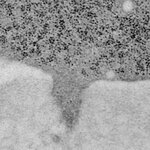Cancer Research

As targeted therapies become more available, increasing opportunity exists to match treatments to the genetics of a specific cancer - but oncologists have to know these genetics in order to make the match, which requires molecular testing of patient samples.
As government increasingly takes control of health care, the standard for such non-essential tests is going to be set far higher for poor people but there were still be more of them, so oncologists are going to have to make sure that patients' samples are properly tested, helping to pair patients with the best possible treatments.…

Circumcision is performed for various reasons, including those that are based on religion, aesthetics, or health, but a paper
in BJU International adds to a growing list of advantages to circumcision; it finds rhat the procedure may help prevent prostate cancer in some men.
Besides advanced age, African ancestry, and family history of prostate cancer, no other risk factors for prostate cancer have been definitively established. This has fueled the search for modifiable risk factors. Marie-Élise Parent, PhD and Andrea Spence, PhD, of the University of Quebec's INRS-Institut Armand-…

A retrospective study used large population-based data to compare the risk of hospitalization for six common chemotherapy regimens. The work gives in the Journal of Clinical Oncology gives oncologists a new understanding of the toxicity levels of specific chemotherapy regimens used for women with early stage breast cancer, according to the authors from The University of Texas MD Anderson Cancer Center.
There have been several prior publications in the health services research field addressing chemotherapy toxicity using claims data, but they don't outline specific…

Researchers at Albert Einstein College of Medicine of Yeshiva University have discovered a signaling pathway in cancer cells that controls their ability to invade nearby tissues in a finely orchestrated manner. The findings offer insights into the early molecular events involved in metastasis, the deadly spread of cancer cells from primary tumor to other parts of the body. The study was published today in the online edition of Nature Cell Biology.
To migrate from a primary tumor, a cancer cell must first break through surrounding connective tissue known as the extracellular matrix (ECM). The…

Feed a cold, starve a...cancer?
A new paper in Breast Cancer Research and Treatment says that the triple negative subtype of breast cancer – one of the most aggressive forms – is less likely to spread, or metastasize, to new sites in the body when mice were fed a restricted diet.
Years ago, calorie restriction was touted as a way to live longer - left out of media stories on the subject were details like that it only worked in mice that were weaned on a starvation diet from birth - but claiming an epigenetic treatment for cancer is relatively new. This decade, everything is…

Much like using dimmer switches to brighten or darken rooms, biochemists have identified a protein called CFIm25 that can be used to slow down or speed up the growth of brain tumors in mice.
Brain and other nervous system cancers are expected to claim over 14,000 lives in the United States this year and the results of the pre-clinical study discovered a way to slow tumor growth in a mouse model of brain cancer by altering the process by which genes are converted into proteins.
Appropriately called messenger RNA, these molecules take the information inside genes and use it to…

More than 60 years ago, Otto Warburg said that cancer cells differ from normal cells in the metabolic pathway they use for the oxidation of sugar.
Rather than the typical series of oxidative steps that take place in the citric acid cycle, cancer cells metabolize sugar via the glycolytic pathway irrespective of whether oxygen is present or not.
Writing in a new paper for The EMBO Journal, researchers believe that the reason for this difference in colon cancer is changes in the Wnt signaling pathway, an essential communication pathway operating in these tumors.
Wnt signaling has been…

The use of lamps that emit UV radiation in nail salons has raised some concern about the risk of cancer, but previous studies have lacked a large enough sampling of lights from a variety of salons.
To create a more authoritative sample, the authors of a new study tested 17 light units from 16 salons with a wide range of bulbs, wattage and irradiance emitted by each device for their research letter.
Higher-wattage light sources were correlated with higher UV-A irradiance emitted.
Using higher-wattage ultra violet (UV) lamps at nail salons to dry and cure polish was associated with more UV-A…

Cancer vaccines haven't lived up to their promise in clinical trials and the reason, many researchers suspect, is that the immune cells that would help the body destroy the tumor – even those reactions boosted by cancer vaccines – are actively suppressed.
Cancer vaccines are designed to boost the body's natural defenses against cancer. They work by training the immune system to recognize and attack specific tumor peptides, which are a kind of identification tag for tumors. These peptide "tags" help the immune system find and attack cancer cells. There are three types of cells that can "see"…

A new study conducted in mice has implicated a single type of cell, in the lining of the bladder, as responsible for most cases of invasive bladder cancer.
The study is the first to pinpoint the normal cell type that can give rise to invasive bladder cancers and the first to show that most bladder cancers and their associated precancerous lesions arise from just one cell, which would also explain why many human bladder cancers recur after therapy.
"We've learned that, at an intermediate stage during cancer progression, a single cancer stem cell and its progeny can quickly and completely…